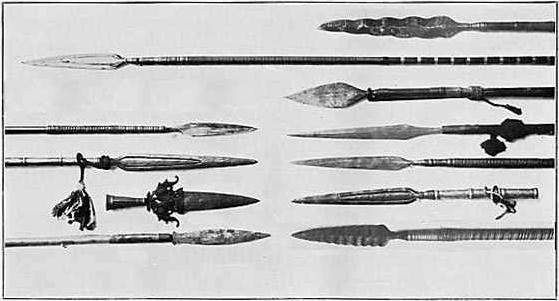

 The Accurate Reloading Forums
The Accurate Reloading Forums  THE ACCURATE RELOADING.COM FORUMS
THE ACCURATE RELOADING.COM FORUMS  Hunting
Hunting  Spear Hunting & Fishing
Spear Hunting & Fishing  A ban on fishing?
A ban on fishing?Go  | New  | Find  | Notify  | Tools  | Reply  |  |
| One of Us |
| ||
|
| One of Us |
If they think that the tea parties were a show of strength (I know, the libs tried to ignore them) they ain't seen nothin yet. I can envisoin 'civil disobedience' on a scale previously never seen before if they try to take all of America's 70,000,000+ outdoorsmen out of the woods and off the water. Especially since so many law enforcement and public safery workers like to hunt and fish themselves. | |||
|
| One of Us |
I haven't fished in years, but I think I smell what the feds are cooking on this issue. 1) release a report that 'semi-suggests' closing fishing in some places... 2) when fisherfolk raise a fuss, form a 'study group' to 'get to the bottom of the issue'... 3)Thereupon create some maner of 'federal green-fishing' tax and pass it off as a comprise. This is all about the money. | |||
|
| One of Us |
I got a call from Marine Fisheries Federal the other day. Decided to go along with the survey. Lots of repetitive questions, all geared to if you fish from boat or surf, front or back. Asked quantities, # of people in house, # fishing, when, how often, that sort. Seemed general to who fishes and where as the person had no idea my counties names even as I told them. A waste of time but they were mining for something. Asked my name, wouldn't give it, asked why would it be relevant. Not much matter, they make regs that effect you in one area while across the river/inlet, new rules. Soon, I'm expecting fishing to be banned. | |||
|
| one of us |
Sounds like the old Marine Recreational Fishing Statistical Survey ("MRFSS"), now being repackaged, in a modified and hopefully improved form, as the Marine Recreational Information Program ("MRIP"). It's part of the way the National Marine Fisheries Program estimates recreational fish landis. The survey actually has two parts. The first part are dockside surveys, in which surveyors actually check what fish anglers are bringing home, measure the size of such fish, etc. Then they compute the average size landed for each fish species and the average number of fish of each species landed per trip. The second part of the survey consists of the phone calls that you described. The idea is to see how many people are fishing, how many trips they take during each two-month "wave", etc. In the old days of MRFSS, calls were made randomly to residents in coastal counties; now that all salt water anglers are required to be registered/licensed, calls are made only to registered anglers pursuant to MRIP, which makes each call more productive and will improve the accurace of the survey, although of necessity it will remain a pretty blunt instrument. Once the information is tabulated, it's used to estimate catch, as well as (from data derived in the interviews) an estimate of fish released. So, for example, if the average southern kingfish (a/k/a "sea mullet") caught in North Carolina during wave 5 (September-October) weighs 1/2 pound, the typical trip produced 1/4 of a sea mullet (1 angler in 4 kept one) and there were 1,000,000 trips taken in North Carolina during those 2 months, NMFS would calculate that 250,000 sea mullet were landed in North Carolina during Wave 5, and that such sea mullet had an aggregate weight of 250,000 pounds. The larger the scale on which extimates are made (that is, coastwide vs. single-state) the more accurate the survey is. For fish commonly caught over a wide area--say, Atlantic striped bass throughout their migratory range of Maine to North Carolina--it yields a pretty accurate result. For fish only occasionally caught in a single state--perhaps snowy grouper off Virginia--it is so inaccurate as to be essentially worthless as a management tool. | |||
|
| Powered by Social Strata |
| Please Wait. Your request is being processed... |
|

Visit our on-line store for AR Memorabilia

